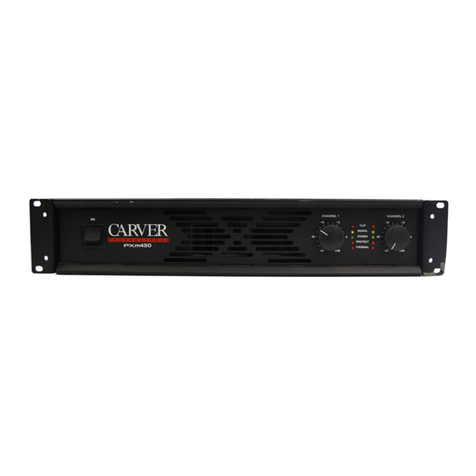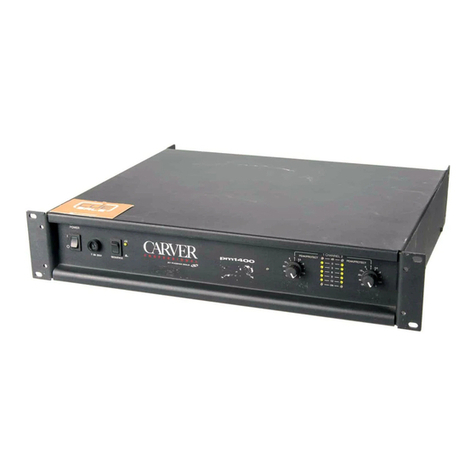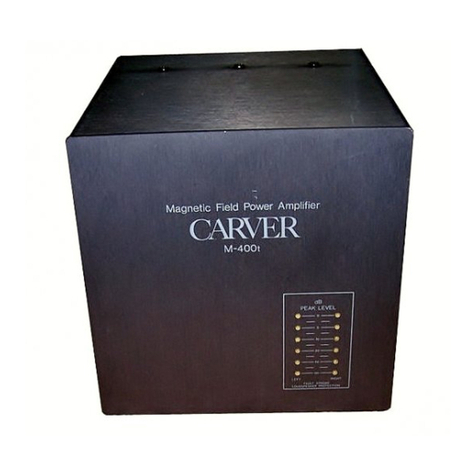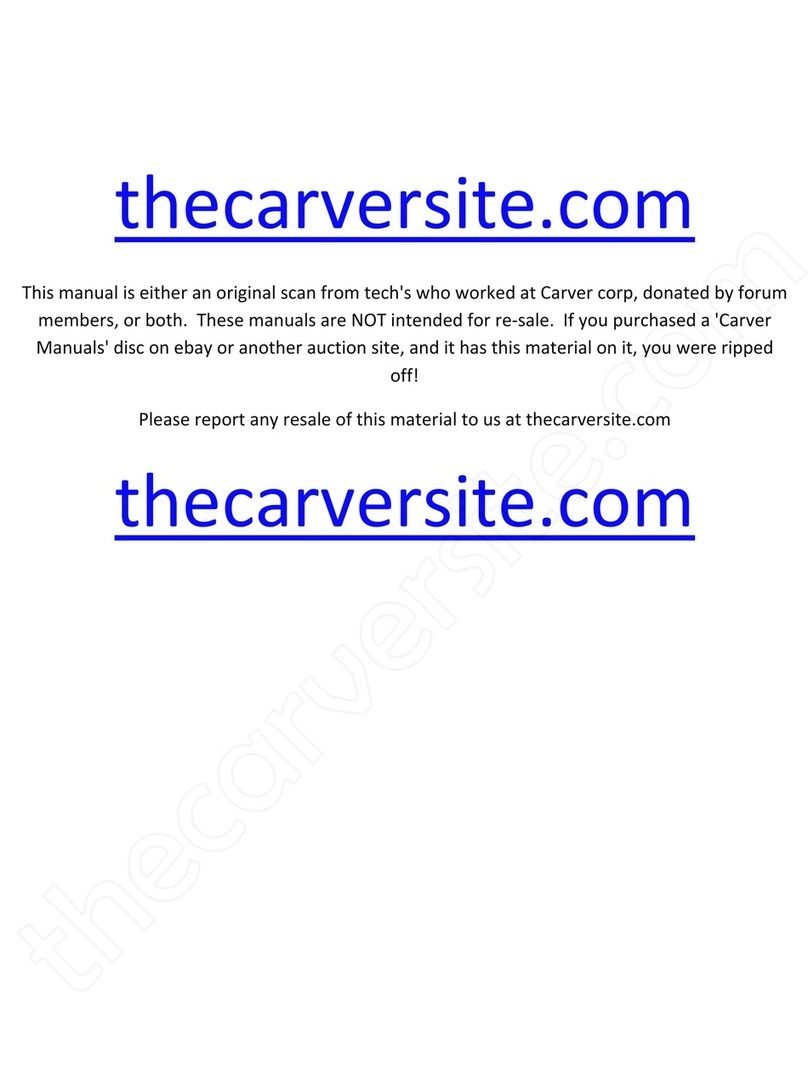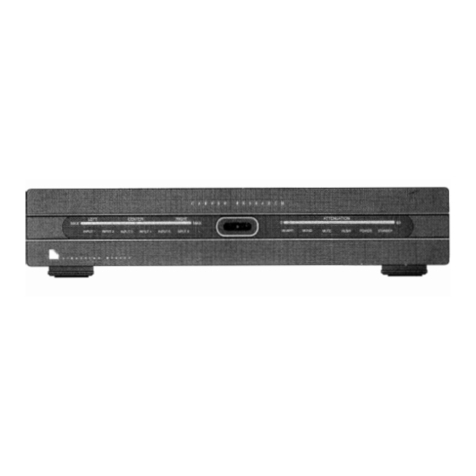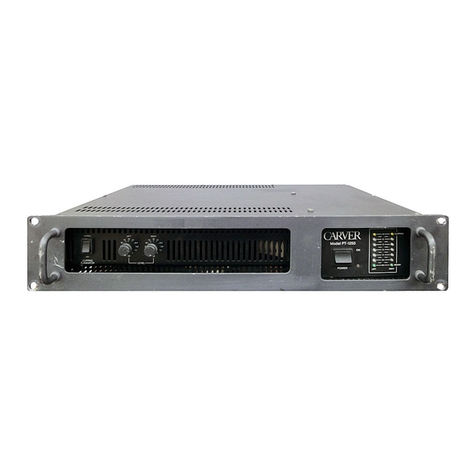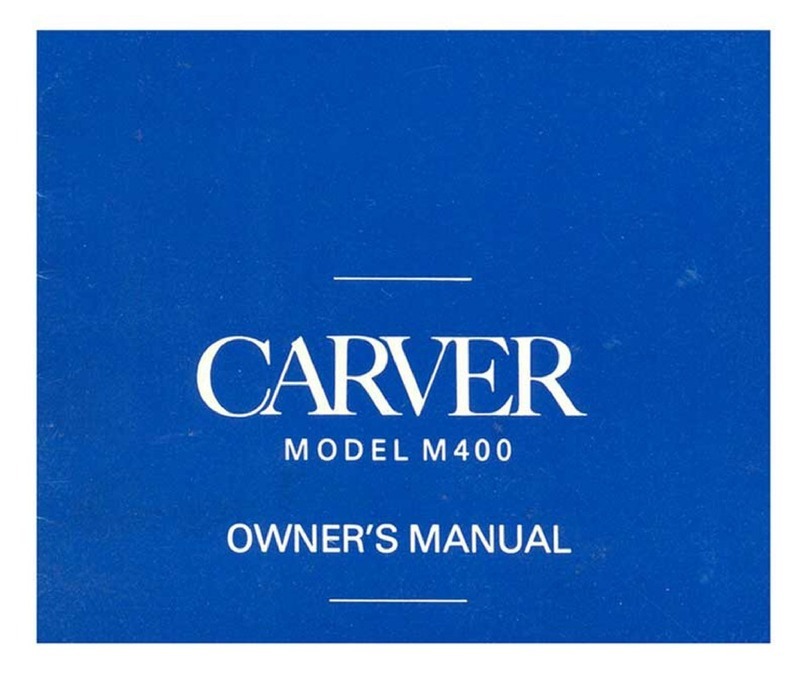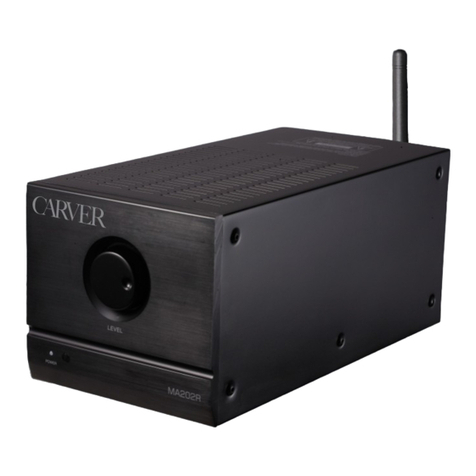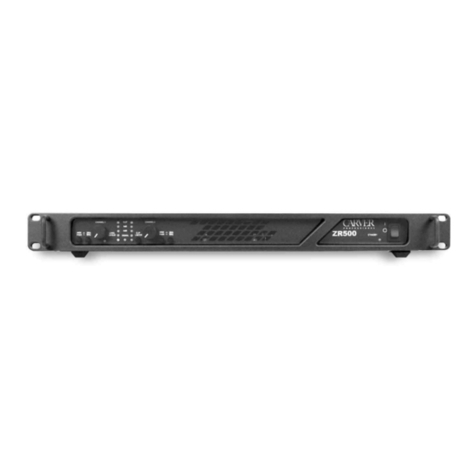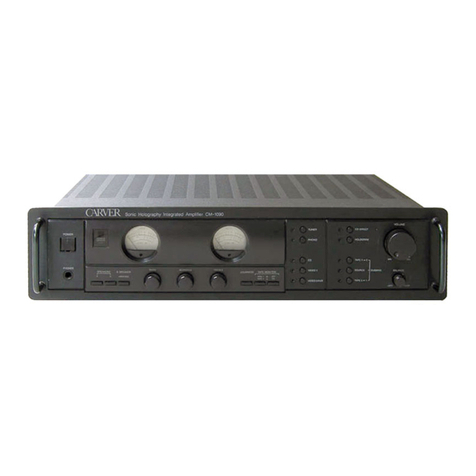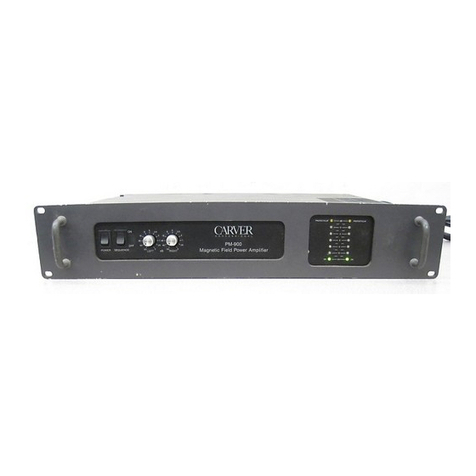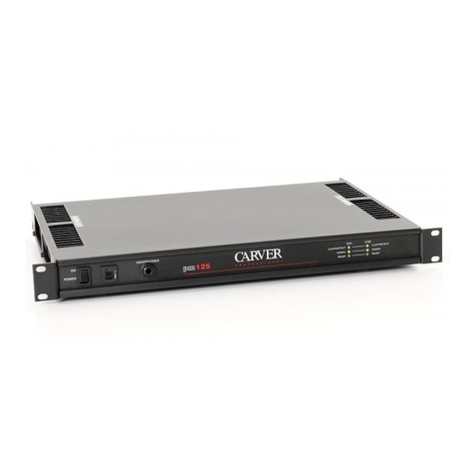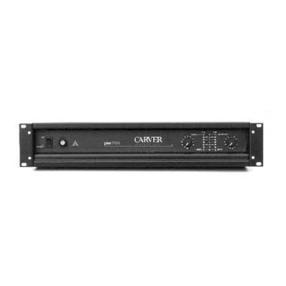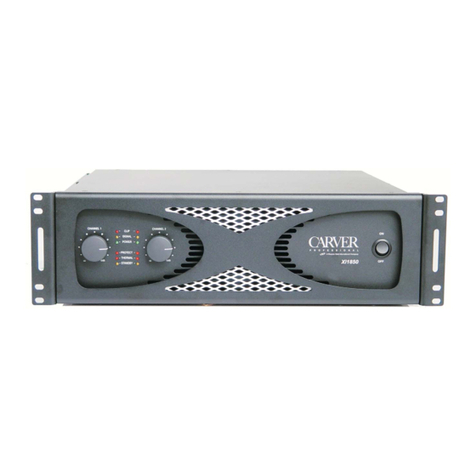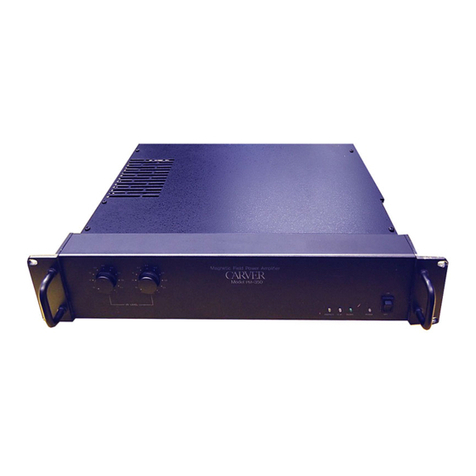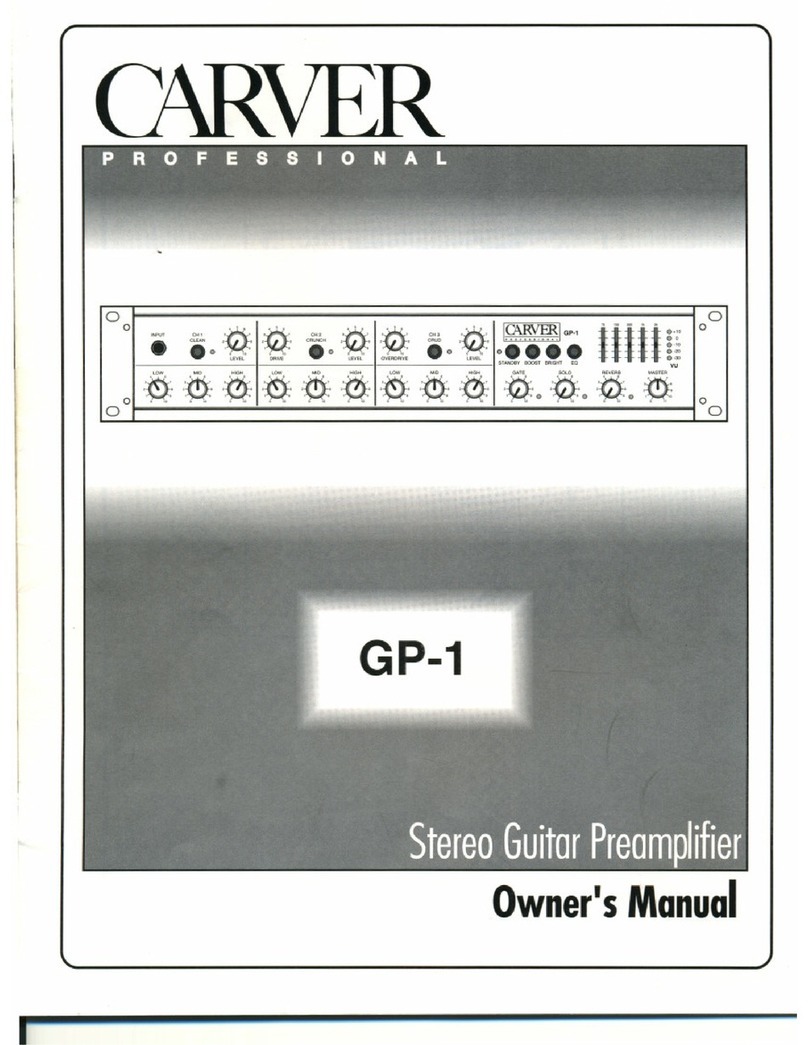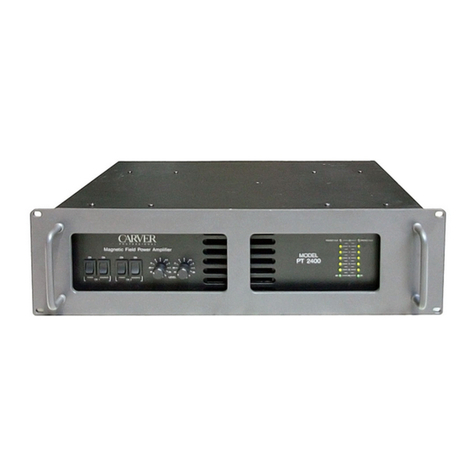A-500x
1. Safety
Instructions
9.
Power Cord Protection -Power-supply cords should
be
~
rou
ted
so
that they are not likeIy to
be
waI
ked
upon
or
pi
nc
hed
1.
Read Instructions -All the safety and operation by items placed upon or against them, paying particular
instructions should
be
read
before
the
Carver
Component
attention to
cords
at
plugs,
convenience
receptacles, and the
·"··'·
..
'.'·"·.I'.:
•.
'··
~.-.)
•.
"·.".:.
;:
is operated.
2.
Retain Instructions -
The safety and operating
instnlctions should be kept
for
future reference.
3.
Heed Warnings -
All
warnings
on
the
Compo
..
nent and
in
these operating
instnlctions should
be
followed.
4.
Follow
Instructions-
All
operating
and
other
instructions should be
followed.
5.
Water and
Moisture-
The
Component should
not
be used near water
...
for example, near a
bathtub, washbowl,
kitchen sink, laundry tubt
in
a wet basement, or near
a s\vimming pool, etc.
6.
Ventilation -The
Component
should
be
situated so that its
location or position does
not interfere with its
proper ventilation. For
examplef
the
Component
should not be situated
on
a bed,
sofa
t rug,
or
similar
surface that may
block
any ventilation openings;
or placed
in
a built-in
installati0 n such
as
a
bookcase or cabinet that
may
impede
the
flow
of
air through ventilation
openings.
7.
Heat -The Compo-
'.~::,,:
point
where
they exit
the
Component.
~
10,
Cleaning -
The
Component should
be
cleaned only as
recommended in this
manual.
I~'-'--
..
f:.{"
I~··il;l
..
:
,.:.!~
..
~
11.
Non-use
Periods-The
power cord ·of the
Conlpo~
(Li'
nent
should be unplugged
~
from the outlet when
unused
for
a long period
of time.
12.
Object and Liquid
Entry -Care should
be
taken so that objects
do
not
fall
into
and
liquids
are
not
spilled into
the
inside
of
the Component.
~:,7i
';·v.~:
~;'4)'~~i
I
13.
Damage Requiring
~
Service -The Compo-
nent should
be
serviced
only
by
qualified service
perS0I111e
I w
he
n:
A.
The
power-supply
cord
or
the
plug
has
been
damaged;
or
B. Objects have fallen, or
liquid has spilled into the
Component;
or
C.
The
Component
has
been exposed
to
rain; or
D.
The Component does
not appear to operate
normally or exhibits
a marked change
in
performance;
or
E.
The Component
has
been dropped, or
its
cabinet
damaged~
CAUTION
RISK OF ELECTRIC
SHOCK
DO NOT OPEN
CAUTION:
TO
REDUCE THE RISK OF ELECTRIC SHOCK
DO NOT REMOVE COVER (OR BACK)
NO
USER
..
SERVIC'EABLE
PARTS
INSIDE
REFER SERVICING
TO
QUALIFIED SERVICE PERSONNEL
The lightning flash
with
arrowhead
symbol
within an equilateral triangle is intended to
arert
the user
to
the
presence of uninsulated
Udangerous
voltage" within the
product1s
encJosure~
that may
be
of
sufficient magnitude
to constitute a risk of electric shock to
persons~
The exclamation
point
withjn
an
equilateral
tri
angle
is
intended
to
alert the user
of
the
presence
of
important operating
and
main
...
tenance (servicing) instructions
in
the literature
accompanying
the
appliance.
PORTABLE CART WARNING
Carts
and
stands
..
The
Component should
be
used
only with a cart
or
stand
that
is
recommended by
the
manufacturer.
A Component and cart
combination should
be
moved with care. Quick
stopSt
excessive force, and
uneven
surfaces
may
cause
the Component and cart
combination to overturn.
nent should be situated away from heat sources such
as
14.
Servicing -The user should not attempt
to
service the
radiators} or
other
devices which produce heat. Component beyond those means described
in
this
operating
8. Power Sources -
The
Component
should
be
connected manual. All other servicing should
be
referred
to
qualified
to
a
po
wer supply only
of
the
type described
in
these service personneL
operation instructions or as
marked
on
the
Component
It
